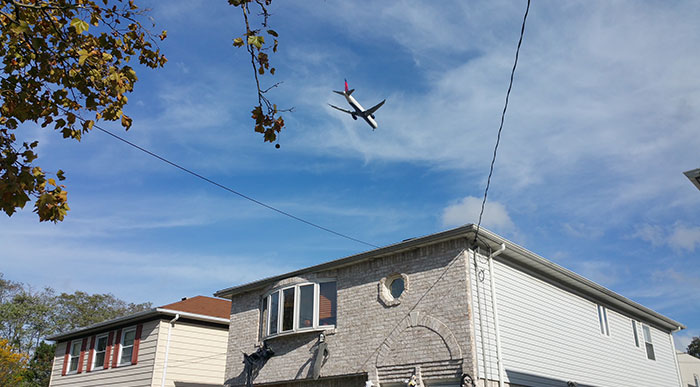File Photo
The bill’s provisions include the authorization of the FAA initiative to develop technologies that reduce aircraft noise.
The Federal Aviation Administration Reauthorization Act, which is wending its way through the Senate after just passing the House of Representatives on Friday by a vote of 393-13, features provisions aimed at reducing excessive airplane noise over Queens, according to U.S. Rep. Grace Meng (D-Flushing), who authored several pieces of the bill.
Meng’s provisions include the Phase II authorization of the FAA’s Continuous Lower Energy, Emissions, and Noise Program, an initiative to develop technologies that reduce aircraft noise. Under the program, the FAA, in partnership with private industry, will work to create new aircraft and engine technologies that are quieter, and produce less noise. The program also seeks to develop alternative jet fuels to reduce fuel emissions and improve fuel efficiency. The goal is to have these improved technologies introduced to commercial aircrafts by 2026.
According to Meng, the FAA will invest $100 million in Phase II of the program and this funding will be matched at least dollar-for-dollar by industry partners that include Boeing, Delta TechOps, GE, Honeywell Aerospace, Pratt & Whitney, Rolls Royce, and other companies.
Additionally, the bill features a provision that sets a deadline for the FAA to develop new methods of measuring aircraft noise. Last month, as part of the massive omnibus appropriations bill, Meng and New York members of the Quiet Skies Caucus passed legislation into law that directs the FAA to continue evaluating alternative metrics to the Day-Night Average Sound Level 65, the current national standard at which the agency determines acceptable levels of aircraft noise. The act that passed the House on Friday would require the FAA to complete this evaluation within one year.
Presently, measuring the impact of noise relies heavily on modeling and simulations to determine “annoyance” levels of aircraft noise over communities, and rarely takes into account actual noise on the ground. Looking at other methods of examining noise will provide more accurate readings of those “annoyance” levels caused by airplanes, the congresswoman noted.
Meng also authored a measure in the Reauthorization Act that would require the FAA to set a five-year strategy on ways to research and mitigate aircraft noise.
“The constant barrage of airplane noise over Queens continues to take a toll on residents of the borough and negatively impact the quality of life of my constituents,” Meng said. “Last month’s enactment of our noise metric provision marked important progress in our fight to combat excessive airplane noise, and these three measures would go a long way in helping those efforts as well.”
Meng and the QSC have been pushing for legislation to provide some semblance of relief for borough communities incessantly bombarded by aircraft noise. In 2016, she introduced the Quiet Communities Act in the House in an effort to restore the U.S. Environmental Protection Agency’s control over airplane noise matters. The proposed legislation would also reestablish a dedicated Office of Noise Abatement and Control in the EPA, and require it to carry out a study on airport noise, examining FAA noise-measurement methodologies, the threshold of noise at which health impacts are felt, and the effectiveness of noise-mitigation measures at airports.

